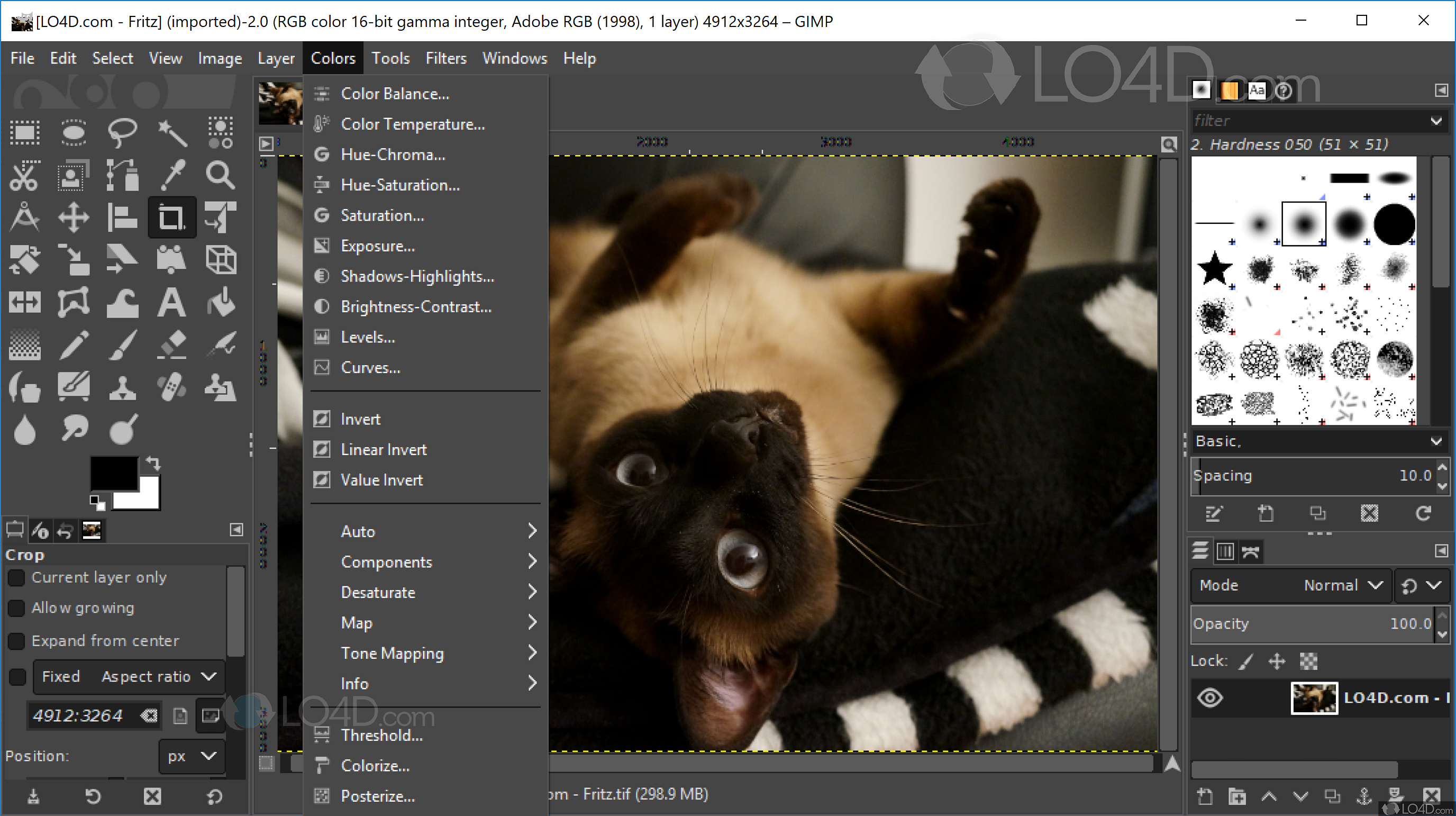

- GIMP FOR MAC REVIEW MAC OS
- GIMP FOR MAC REVIEW SOFTWARE DOWNLOAD
- GIMP FOR MAC REVIEW MANUAL
- GIMP FOR MAC REVIEW PROFESSIONAL
- GIMP FOR MAC REVIEW DOWNLOAD
GIMP includes a set of 10 “paint tools”, which, except for the ink tool, use the same set of brushes. This button is useful if you add new patterns to a folder, and want to make them available without having to restart GIMP. Pressing the refresh button causes GIMP to rescan the folders in your pattern search path, adding any newly discovered patterns to the list. Photoshop ABR brushes are also easily imported for use. gbr (“ gimp brush”) format is used for ordinary and color brushes. To make a pattern available, place it in one of the folders in GIMP’s pattern search path which includes two folders, the system patterns folder, which you should not use or alter, and the patterns folder inside your personal GIMP directory. With the bucket fill tool, you can choose to fill a region with a pattern instead of a solid color. The same effect may be obtained by using the Filter, Map, Tile option on the drawn image. A pattern is said to be tileable if copies of it can be adjoined left-edge-to-right-edge and top-edge-to-bottom-edge without creating obvious seams, such patterns are used in standard knitting repeats. They vary in size, are used for filling regions by tiling, that is, by placing copies of the pattern side by side like ceramic tiles. You can use them with the bucket fill tool. Some content paraphrased from the online Gimp manual: in GIMP, a pattern is a small image used to fill areas by placing copies of side by side. Punchcard knitters may use the same techniques to set up their 24 x X custom length repeats and tile the results to visualize how they line up when knitted in multiples. Some simple, quick functions in Gimp can simplify and speed up the progress considerably. Many knitters designing small repeats use very simple programs and enter pixels singly or copy and paste in small groups.

The content of such published material and tutorials can be overwhelming, but isolated techniques for the required binary bit mapped knit scale are easy to sort out. In addition, punchcard machines have a 24-pixel width repeat constraint.
GIMP FOR MAC REVIEW DOWNLOAD
Most focus on working with very large images in huge numbers of colors, and brushes or patterns in the tutorials are often larger than the maximum stitch count on our home knitting machines capable of electronic download and with needle counts of 180-200. There are many very good videos on using multiple versions of GIMP on Youtube.

Present experiments are placed in alphabetical order. The main difference between it and the Paintbrush is that although both use the same type of brush, the pencil tool will not produce fuzzy edges. The Pencil tool is used to draw freehand lines with a hard edge. Gimp has a wide range of paint tools The most commonly used in creating repeats for knit design are Pencil, Paintbrush, and Bucket Fill. We’re working on that, please check back later.”
GIMP FOR MAC REVIEW SOFTWARE DOWNLOAD
According to the software download site for Mac “the currently available package provides GIMP 2.10.22 and has not yet updated to the latest version, GIMP 2.10.24.
GIMP FOR MAC REVIEW MAC OS
There are slight variations in behaviors depending on the Mac OS version. I have been spending more time exploring version 10.22 and am becoming more familiar with new features and design options. The previous post on this topic: 7/gimp-update-for-mac/
GIMP FOR MAC REVIEW MANUAL
GIMP FOR MAC REVIEW PROFESSIONAL
If you're looking for a cost-effective solution that will allow you to edit your photos with professional level results, then you should certainly look into Gimp. Bottom LineĪlthough it isn't flawless, Gimp is a very powerful photo editing program. However, these tools did not work exceptionally well in Gimp, and you usually have to resort to manually selecting your areas instead. ConsĪutomated selection tools: When you're editing large amounts of images, anything that speeds up your workflow is very welcome, such as automatic selection tools. If you're used to setting up your digital retouching workspace a certain way, you should be able to mirror that interface fairly closely within this program. Interface flexibility: Gimp allows you to adjust the interface to your liking.

Gimp has a number of familiar tools and interfaces that will be almost immediately clear to anyone who has used Photoshop before, which makes for a simple transition. So if you're an experienced editor you've probably got a fair bit of familiarity with that program. Similarity to Photoshop: The reality is that Photoshop has been on top of the photo editing world for some time.


 0 kommentar(er)
0 kommentar(er)
